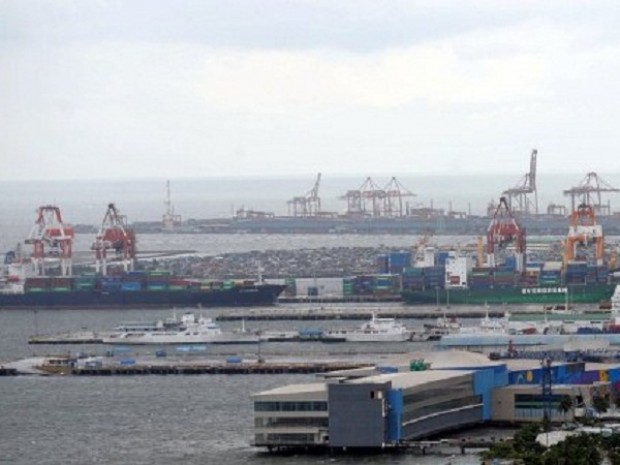
AFP FILE PHOTO
MANILA, Philippines—International merchandise commerce grew for the twelfth straight month in January, however the sustained surge in imports outpacing exports stored an enormous commerce deficit exerting depreciating strain on the peso.
The newest preliminary Philippine Statistics Authority (PSA) report on exterior commerce efficiency launched on Friday (March 11) confirmed that the worth of January exports and imports mixed climbed 20.1 p.c year-on-year to $16.8 billion, reversing the 9-percent drop in 2021.
Shipments of Philippine-made items abroad rose 8.9 p.c year-on-year to over $6 billion, a turnaround from the 4.4-percent decline throughout the identical month final yr.
In a report, Pantheon Macroeconomics senior Asia economist Miguel Chanco mentioned the Philippines’ semiconductor exports have been “lastly exhibiting indicators of life.”
“The present tempo of year-on-year export development within the Philippines is nearly proper when stripping out Lunar New Yr noise,” mentioned Chanco.
“A fourth-straight month-to-month enchancment is probably going in February. The month-on-month weak point in January was concentrated primarily in non-electronic items, as exports of electronics loved a continuation of their momentum within the fourth quarter of 2021,” Chanco mentioned.
“Encouragingly, shipments of semiconductors rose by a still-punchy 3.5 p.c month-on-month, constructing on the 5-percent bounce in December,” he added.
Imports jumped by a quicker 27.5 p.c year-on-year to $10.7 billion final January, reversing 2021’s 11.8-percent fall.
“Imports of shopper items suffered a hefty correction, pouring some chilly water over the comparatively benign internet gross sales report for January, which indicated solely a small direct hit from the Omicron wave. Reassuringly, purchases of capital items are holding up comparatively properly,” Chanco mentioned.
“Capital items, uncooked supplies, shopper items, and gasoline and minerals all confirmed sizable beneficial properties for the month because the financial system step by step reopens after months of restrictions,” mentioned ING senior Philippines economist Nicholas Mapa in a separate report.
As imports exceeded exports, the trade-in-goods steadiness remained at a deficit in January which—at $4.7 billion—was 63.2-percent larger than the month-to-month hole in 2021 however smaller than the file $5.3-billion deficit final December.
Whereas a narrower hole, the lingering commerce deficit at first of this yr “seemingly stored the present account steadiness in deficit territory” as properly, Mapa mentioned. A present account deficit, reflecting extra US {dollars} leaving the financial system, weakens the Philippine peso. The home forex slipped to the 52:$1 degree this week.
“[January’s] commerce deficit of $4.7 billion is already well-above the pre-COVID-19 common of $3.5 billion,” Mapa mentioned.
“Within the coming months, we anticipate the commerce hole to yawn additional, particularly with the oil import invoice forecast to bloat resulting from costly crude. The gasoline import invoice may swell from $1.4 billion to $2.1 billion resulting from pricier international crude, inflicting the general commerce deficit to deteriorate additional,” Mapa mentioned.
“A wider commerce hole spells depreciation for the peso, which is down 2.4 p.c for the yr. Dearer power and a weaker forex will seemingly feed by way of to quicker inflation within the close to time period regardless of the central financial institution’s expectation that inflation will stay within-target for the yr,” he mentioned.
“We might want to revise our inflation projections and a breach within the inflation goal can’t be dominated out at this level,” Mapa added.
The Bangko Sentral ng Pilipinas (BSP) had projected a mean 2022 inflation charge of three.7 p.c, throughout the 2 to 4 p.c goal band of manageable value hikes conducive to financial development. The BSP had nonetheless conceded that the second quarter may see month-to-month breaches within the headline charge resulting from expectations of excessive meals and oil costs because of the Ukraine-Russia conflict.
In a March 10 report, the Washington-based Institute of Worldwide Finance (IIF) estimated that sharp will increase in oil and wheat costs would worsen the Philippines’ present account deficit.
Every time international oil costs rose by $10 a barrel, the IIF’s estimates confirmed an addition of about 0.2 share level (ppt) within the present account deficit. If wheat costs rise by $50 per metric ton, the Philippines’ present account deficit would increase by nearly 0.1 ppt.
Final yr, the Philippines swung again to a present account deficit from the file surplus posted two years in the past as financial restoration meant the nation needed to spend extra {dollars} on imports of uncooked supplies and completed shopper items, not like in 2020 when a consumption stoop amid the worst annual recession post-war had gathered overseas reserves.
TSB
Learn Subsequent
Subscribe to INQUIRER PLUS to get entry to The Philippine Day by day Inquirer & different 70+ titles, share as much as 5 devices, take heed to the information, obtain as early as 4am & share articles on social media. Name 896 6000.


